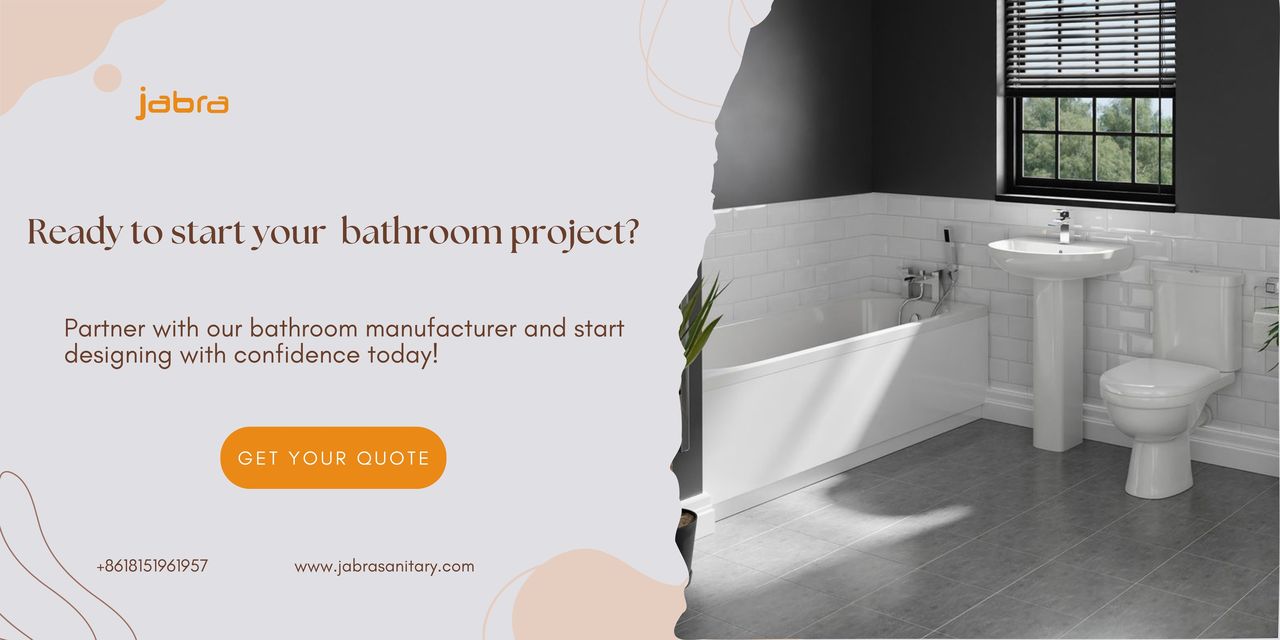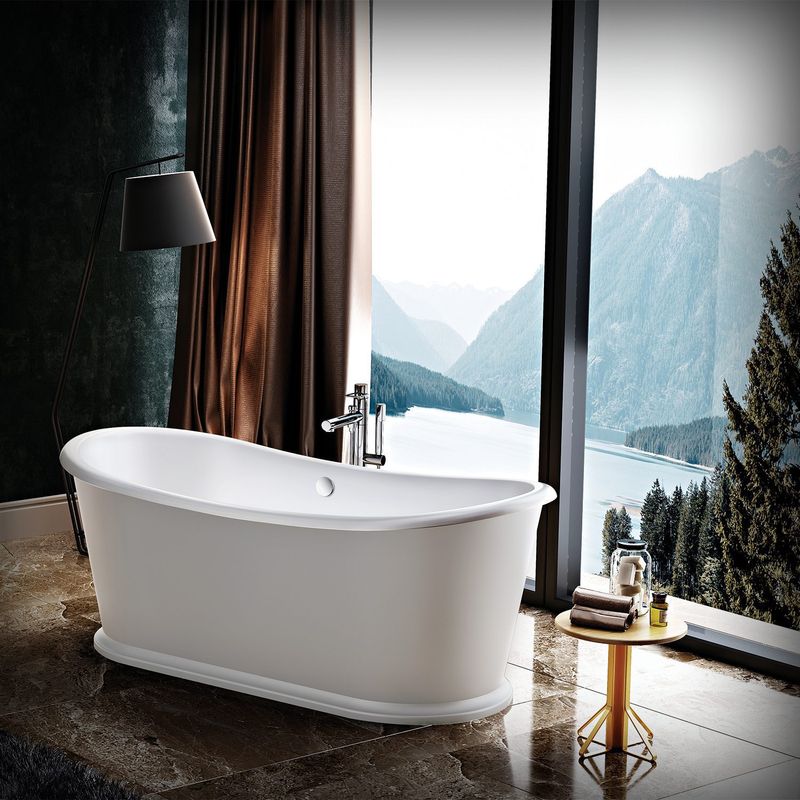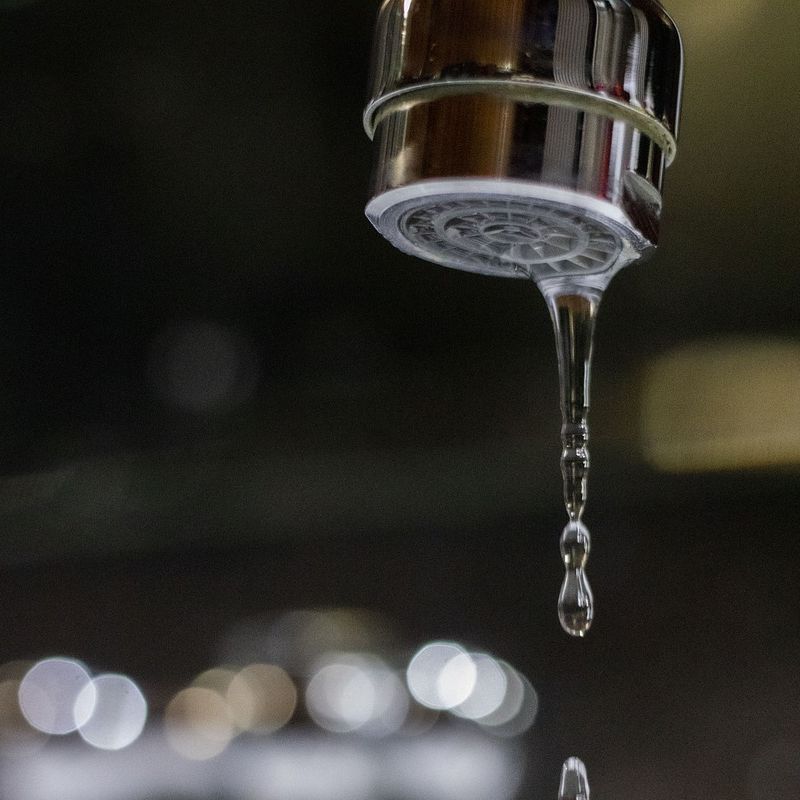 English
English
Jabra Sanitary is a sanitaryware supplier offering toilets, sinks, faucets, bathtubs, etc., at competitive prices. If you're a distributor, wholesaler, or project contractor, get a quote today!
 $23.9 Limited-time Offer
$23.9 Limited-time Offer Consignment Policy
Consignment Policy 20 Years of Experience
20 Years of Experience
A worn-out sink can drag down your whole space, but there's a budget-friendly fix: refinishing or reglazing. Compared to replacement, refinishing or reglazing can significantly reduce the project timeline.
Did you know refinishing a sink can cost as little as $200, while replacing it might exceed $1,000? Many homeowners opt for this to save money and avoid plumbing hassles.
This article reveals average sink refinishing costs, how sink size and material impact the price, and what you'll need for a DIY approach. We'll also weigh DIY versus hiring a pro and offer money-saving tips.
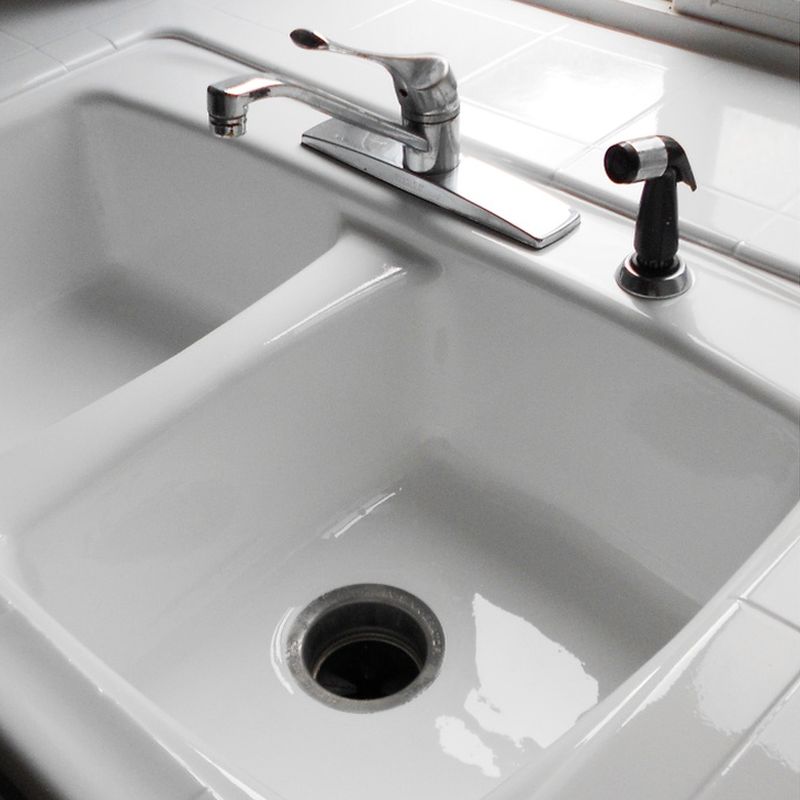
Table of Contents
What Is the Average Cost to Refinish or Reglaze a Sink?
Costs to Refinish or Reglaze a Sink with Different Sizes
How Much Does It Cost to Refinish or Reglaze Different Sink Types?
Refinishing or Reglazing Sink Cost by Material
Material Prices for Sink Reglazing or Refinishing
Other Factors Influencing Sink Refinishing and Reglazing Costs
DIY vs. Professional Sink Refinishing or Reglazing: Cost Comparison
Sink Refinishing vs. Reglazing vs. Replacement
Tips for Saving Money on Sink Refinishing or Reglazing
Cost of Maintenance After Refinishing or Reglazing a Sink
FAQs
Conclusion: Is Sink Refinishing or Reglazing Worth It?
What Is the Average Cost to Refinish or Reglaze a Sink?
Refinishing or reglazing is a wallet-friendly option compared to a full replacement when it comes to giving your sink a fresh look. But how much does it cost to refinish a sink?
On average, professional sink refinishing costs between $200 and $800. According to HomeAdvisor, most homeowners spend around $690. However, the final price can vary depending on a few key factors.
Low Cost, Average Cost, High Cost
Low Cost: Around $200 – This might apply to smaller sinks, like a bathroom sink, or those in relatively good condition with minimal damage.
Average Cost: About $690 – This is the typical price for most standard kitchen or bathroom sinks that need a moderate amount of work.
High Cost: Up to $800 – Larger sinks, like a farmhouse kitchen sink, or those with significant damage (think deep scratches or cracks) will push the cost to refinish a sink
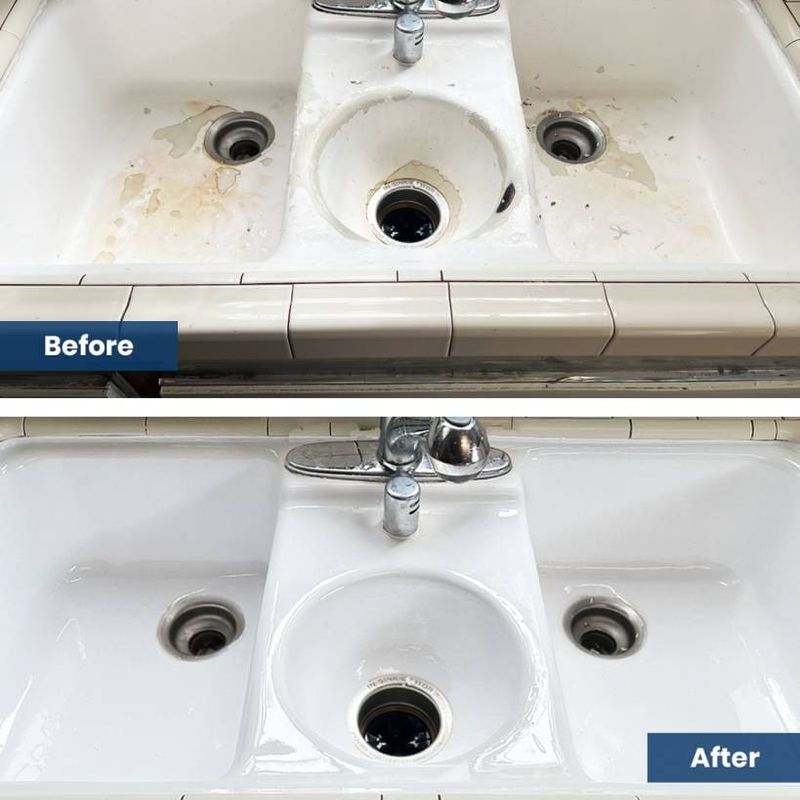
Costs to Refinish or Reglaze a Sink with Different Sizes
The size of your sink is a key factor in determining the cost of refinishing or reglazing. Larger sinks require more materials and time, which naturally increases the price.
Kitchen Sink Refinishing Costs by Size
Here are the typical sink refinishing cost ranges for refinishing kitchen sinks, depending on their size:
- 30-inch kitchen sink: $250 - $400
- 30 to 36-inch kitchen sink: $300 - $500
- Over 36-inch kitchen sink: $400 - $700+
For example, a standard 30-inch kitchen sink in good condition might cost around $300 to refinish. In contrast, a larger 40-inch farmhouse sink with some scratches could cost closer to $600 due to the extra surface area and labor involved.
Expansive sinks, especially those exceeding 36 inches, often require additional materials and effort, which drives up the overall sink refinishing cost.
Bathroom Sink Refinishing Costs by Size
For bathroom sinks, the costs to refinish a sink vary based on the following size ranges:
- Small bathroom sinks (16-20 inches): $200 - $350
- Medium bathroom sinks (19-24 inches): $250 - $400
For instance, a small 18-inch bathroom sink with minimal wear might cost $250 to refinish, while a 22-inch sink with chips and stains could run around $350, as it requires more preparation work.
If your sink has significant damage or needs special finishes, expect the cost to refinish a sink to rise accordingly.
How Much Does It Cost to Refinish or Reglaze Different Sink Types?
The cost to refinish or reglaze a sink depends on the type of sink you have, as each comes with its design and requirements that affect the price.
Drop-In Sink Refinishing Costs
Drop-in sinks, also called self-rimming or top-mount sinks, are common in both bathrooms and kitchens. The sink refinishing costs typically range between $250 and $450 depending on size and condition:
- Small bathroom drop-in sink with minor wear: Around $300.
- Larger drop-in sink with more damage: Around $400.
- Standard 30-inch drop-in kitchen sink: Around $350.
- Larger or heavily used drop-in kitchen sink: This can go up to $450, especially with a tougher, more durable finish.
Pedestal Sink Refinishing Costs
Pedestal sinks, found mainly in bathrooms, require more work due to their design, as the pedestal may need to be detached or carefully worked around. This makes the refinishing process more labor-intensive, with costs to refinish a sink typically ranging between $350 and $600:
- Small pedestal sink in good condition: Around $400.
- Larger or ornate pedestal sinks with chips or cracks: Can run up to $550.
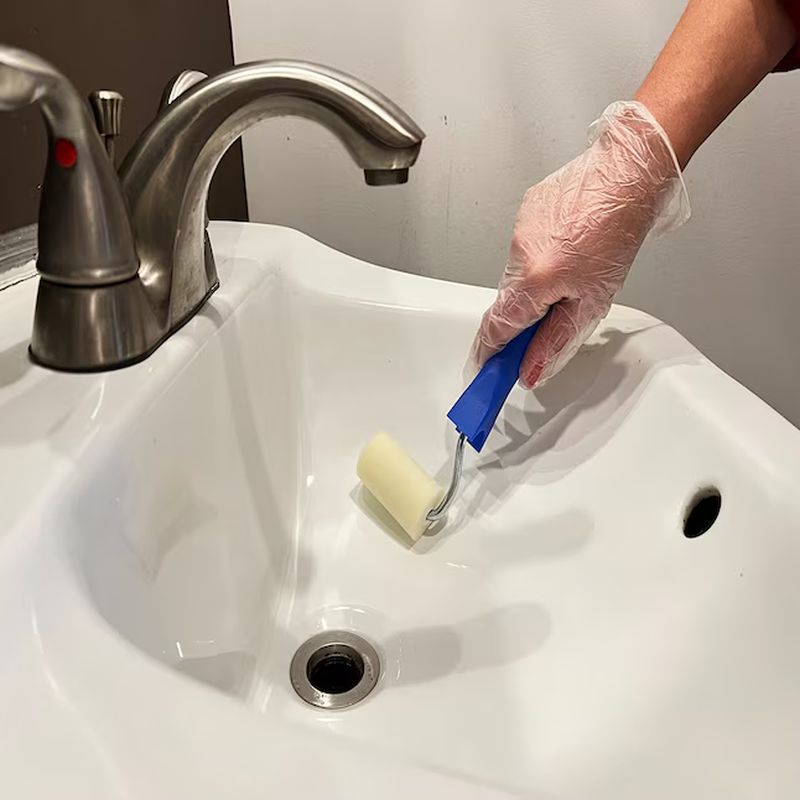
Custom Kitchen Sink Refinishing Costs
Custom kitchen sinks stand out due to their unique designs, larger sizes, or specialized materials. The price to refinish a custom kitchen sink typically falls between $500 and $800, though it can go higher for very complex projects. Examples include:
- A large custom farmhouse sink with intricate details might cost around $700.
- A simpler custom sink could be closer to $500.
Refinishing or Reglazing Sink Cost by Material
Each type of sink material requires different techniques, tools, and expertise, which can affect the overall price. Below, we break down the typical cost ranges for refinishing or reglazing sinks made from porcelain, stainless steel, cast iron, granite, and stone.
Porcelain Sink Refinishing Costs
Cost Range: $300 - $600
Factors Affecting Cost:
- The extent of damage: Chips, cracks, or heavy stains require more preparation and materials, increasing the cost.
- Type of finish: A standard finish is less expensive, while custom colors or unique designs can raise the price.
- Size of the sink: Larger porcelain sinks take more time and materials to refinish, leading to higher costs.
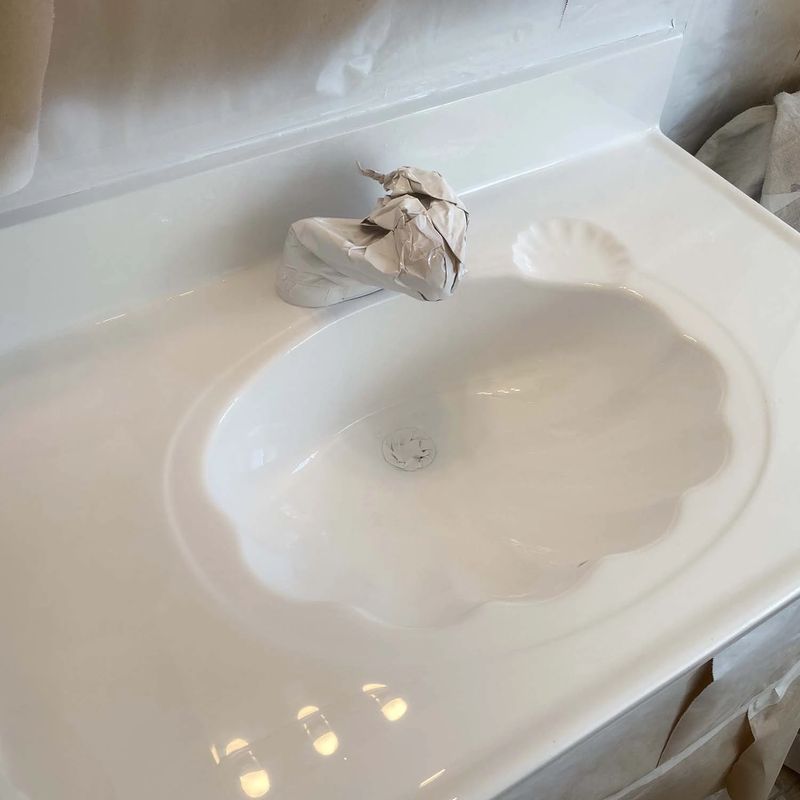
Stainless Steel Sink Refinishing Costs
Cost Range: $250 - $500
Factors Affecting Cost:
- Special coatings or treatments: Stainless steel sinks may need specific finishes to resist scratches or restore shine.
- Size and condition: Larger sinks or those with deep scratches require more labor and materials.
- The labor involved: Preparation, such as sanding and polishing, can vary in complexity depending on the sink's wear.
Cast Iron Sink Refinishing Costs
Cost Range: $350 - $700
Factors Affecting Cost:
- Weight and size: Cast iron sinks are heavy, which can make the refinishing process more labor-intensive.
- Presence of rust or damage: Rust removal or repairing chips in the enamel increases both time and material costs.
- Labor required: The refinishing process for cast iron often involves multiple steps, including sanding, priming, and applying a durable finish.
Granite Sink Refinishing Costs
Cost Range: $400 - $700
Factors Affecting Cost:
- Specialized tools and materials: Granite requires specific products to repair and refinish without damaging the stone.
- The extent of damage: Cracks, chips, or dullness in the surface can make the job more complex.
- Size and design: Larger or custom-designed granite sinks take more time and effort to refinish.
Stone Sink Refinishing Costs
Cost Range: $500 - $800
Factors Affecting Cost:
- Type of stone: Materials like marble, travertine, or slate each require different refinishing techniques.
- The complexity of the process: Stone sinks often need careful handling to avoid further damage during refinishing. Avoid DIY reglazing for stone sinks without expertise.
- Size and condition: Larger stone sinks or those with significant wear will cost more to restore.
Material Prices for Sink Reglazing or Refinishing
When considering a DIY approach to refinishing or reglazing a sink, understanding the cost of materials is crucial.
Masking Tape/Painter's Tape
Cost Range: $5 - $15
Details: Masking tape is used to protect areas around the sink that you don't want to refinish. A standard roll is usually sufficient for most sink projects, and costs are relatively low. Higher-quality painter's tape may cost a bit more but can provide better adhesion and cleaner lines.
Palm Sander
Cost Range: $30 - $100
Details: A palm sander is essential for preparing the sink's surface by smoothing out imperfections and ensuring the new finish adheres properly. Budget-friendly models start around $30, while more durable, professional-grade sanders can cost up to $100. For occasional use, a mid-range sander of around $50 should suffice.
Acrylic Topcoat
Cost Range: $20 - $50 per quart
Details: An acrylic topcoat provides a durable, glossy finish to the sink. Prices vary based on the brand and the size of the container. A quart is typically enough for a standard sink, with costs ranging from $20 for basic options to $50 for premium brands offering better durability and shine.
Epoxy Paint
Cost Range: $25 - $60 per kit
Details: Epoxy paint is often used in sink refinishing due to its water-resistant and durable properties. A typical kit includes both the paint and hardener, with prices starting at $25 for smaller kits and going up to $60 for larger or higher-quality options.
Plastic Sheeting
Cost Range: $10 - $20
Details: Plastic sheeting is used to cover and protect surrounding areas from dust, overspray, and drips during the refinishing process. A roll of plastic sheeting typically costs between $10 and $20, depending on the thickness and size. For most sink projects, a smaller roll will suffice.
Sink Reglazing Kit
Cost Range: $85 - $120
Details: A complete sink reglazing kit includes all the necessary materials—such as epoxy, topcoat, sandpaper, and instructions—for a DIY refinishing project. These kits are designed for convenience and typically cost between $85 and $120. While they can save time and effort, the quality of the finish may not match that of a professional job.
Other Factors Influencing Sink Refinishing and Reglazing Costs
While the size, type, and material of your sink are key drivers of sink refinishing or reglazing costs, several additional factors can also affect the final price. Understanding these elements will help you budget more accurately and avoid unexpected expenses.
Condition of the Sink
The current state of your sink significantly impacts the cost of refinishing or reglazing. The more damage it has, the more preparation and materials are required, which increases both labor and material expenses.
Minor Damage: Sinks with light scratches or surface stains are relatively simple to refinish. A light sanding and a fresh coat of finish may be all that's needed, keeping costs lower.
Moderate to Severe Damage: Sinks with chips, cracks, or deep staining require more extensive work. Chips and cracks must be filled and sanded smooth before refinishing, while heavy stains might need specialized cleaning or treatments.
Complexity of the Job
The intricacy of the refinishing job can also raise the overall cost. Customizations or unique features demand more time, skill, and sometimes specialized materials.
Standard Finishes: A basic, single-color finish is the most budget-friendly option. It's a straightforward process that requires minimal additional effort or resources.
Custom or Intricate Designs: If you're after a specific color to match your décor or a unique finish (like matte or textured), the job becomes more complex. Custom colors may require mixing special paints, and intricate designs or patterns take longer to prepare and coat.
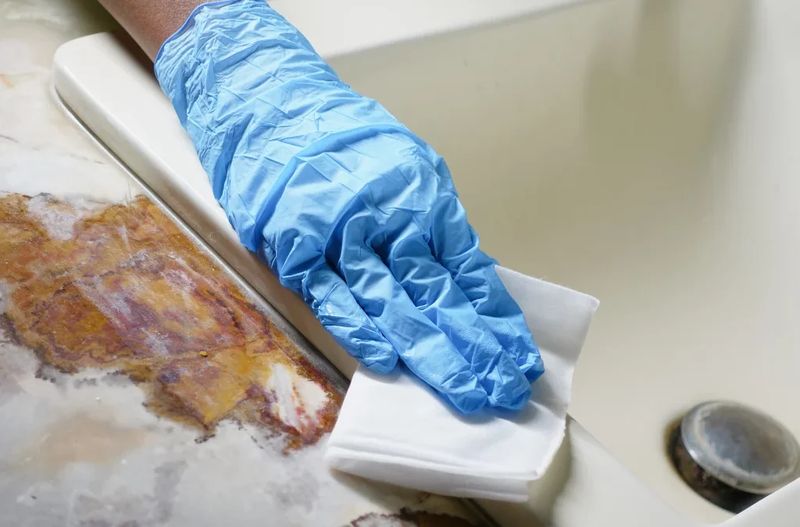
Geographic Location
Where you live plays a big role in determining the cost of sink refinishing or reglazing. Labor rates and market demand fluctuate by region, influencing what you'll pay.
High-Cost Areas: In places with a high cost of living—like major cities or upscale suburbs—labor rates tend to be higher. High demand for refinishing services in these areas can also push resurfacing bathroom sink costs up due to the limited availability of professionals.
Low-Cost Areas: In regions with lower living costs or less demand, such as rural areas or towns with many service providers, pricing is often more competitive.
For instance, refinishing a sink in a metropolitan area like New York City might range from $500 to $700, while the same job in a smaller town could cost $300 to $400. Getting local quotes is a smart way to gauge pricing in your area.
DIY vs. Professional Sink Refinishing or Reglazing: Cost Comparison
When it's time to give your sink a fresh look, you've got two choices: tackle it yourself (DIY) or hire a professional. Both options come with different costs and trade-offs, so let's dive into the details to help you figure out what works best for you.
Cost Comparison
DIY Costs: Going the DIY route means picking up a refinishing kit, which typically costs between $85 and $120.
These kits come with the basics—epoxy, topcoat, and sandpaper. If you don't already have tools like a palm sander, you might spend an extra $30 to $100 to buy or rent one.
Safety gear, like gloves and a mask, could add another $10 to $20. So, depending on what you've got at home, your total DIY sink refinishing cost could range from $100 to $200. Besides, mistakes may require professional fixes.
Professional Costs: The resurfacing bathroom sink costs will set you back between $200 and $800. The sink refinishing cost varies based on factors like the sink's size, its condition, and your location. For instance, a small bathroom sink might only cost $200, while a big kitchen sink with lots of wear could hit $800.
Here is a brief table for a quick check:
Category |
Details |
Cost Range |
|---|---|---|
DIY Costs |
Refinishing kit (epoxy, topcoat, sandpaper); additional tools like a palm sander; safety gear (gloves, mask) |
$100 - $200 |
Professional Costs |
Hiring a professional to refinish the sink; cost varies based on sink size, condition, and location |
$200 - $800 (average $690) |
Which One Should You Pick?
If you're comfortable with tools, have some spare time, and your sink isn't in terrible shape, DIY could save you a nice chunk of change. On the other hand, if your sink's a mess or you just want it done right without the stress, a professional might be worth the investment.
In a nutshell, DIY is great if you're up for a project and want to keep costs down while hiring a certified pro ensures flawless results.
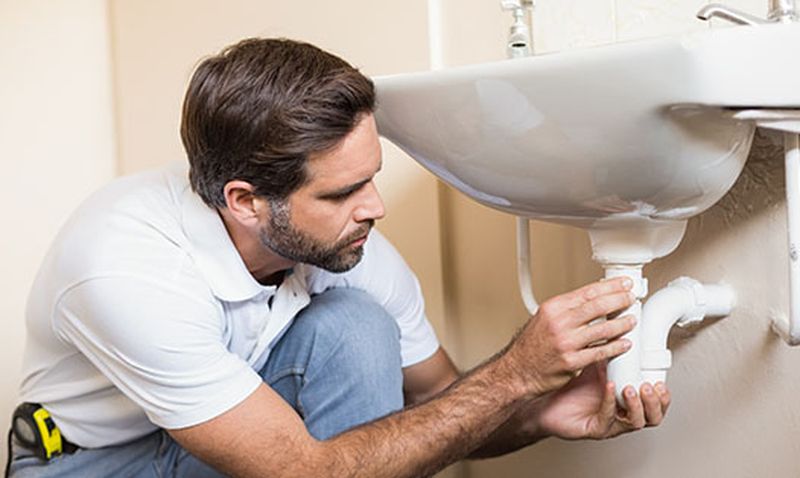
Sink Refinishing vs. Reglazing vs. Replacement
When our sinks start looking worn or chipped, we're often faced with a big decision: should we refinish them, reglaze them, or replace them entirely? Each option has its own vibe, so let's break it down.
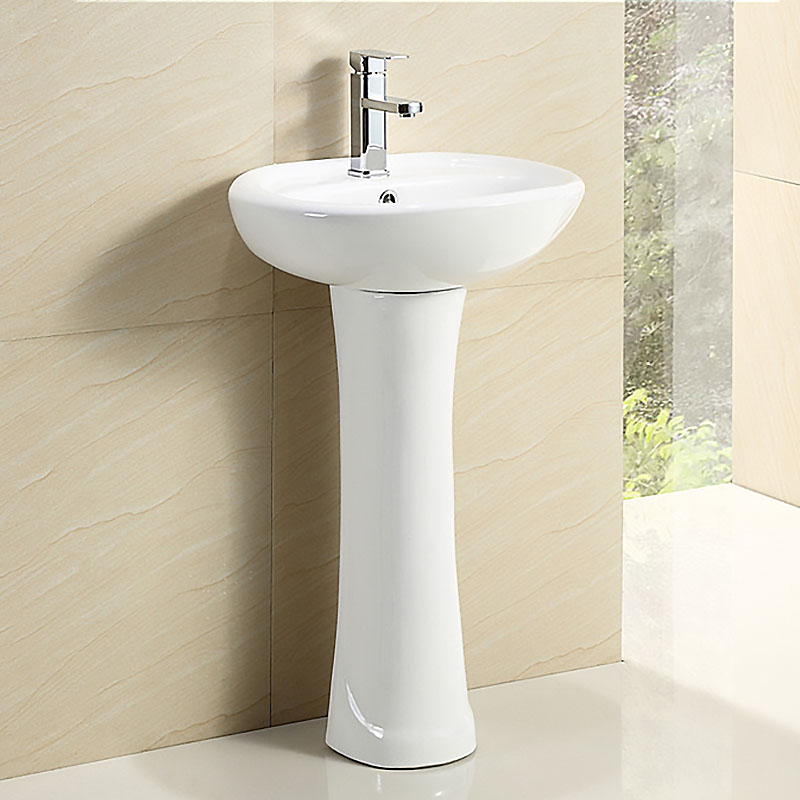 Ads
Ads
Small Space Oval Pedestal Sink
Introducing the EZ8009 small space oval pedestal sink, designed to enhance any compact bathroom while offering modern elegance. This small modern pedestal sink features a multilayer glaze that resists stains, ensuring a clean and polished appearance even in tight spaces.
The Benefits of Refinishing or Reglazing Over Replacement
Opting to refinish or reglaze our sinks comes with some pretty cool perks compared to replacing them. Here's why we might lean toward this choice:
- Cost Savings: It usually costs us between $250 and $1,000, averaging around $400 to $700. Replacing a sink? That can hit us with a bill from $150 to over $2,000 for the sink itself, plus $150 to $1,500 for installation. We're talking savings of up to 70% with refinishing!
- Time Efficiency: We love that refinishing or reglazing can wrap up in just a day. Replacement often drags on longer, especially if we need to tweak the plumbing.
- Less Disruption: Since we're not ripping out the sink, there's no fuss with disconnecting pipes. Less mess, less stress—perfect for keeping our homes running smoothly.
- Environmental Benefits: By sprucing up what we already have, we're cutting down on waste. It's a small win for the planet, and we feel good about that.
- Preservation of Original Design: Got a funky vintage sink or a custom piece? Refinishing lets us keep its charm while making it look brand new.
Let's put some numbers on the table to see how refinishing, reglazing, and replacement stack up for us:
Category |
Details |
Cost Range |
|---|---|---|
Refinishing or Reglazing Costs |
Average cost for professional refinishing or reglazing |
$400 - $700 |
Full range of costs for refinishing or reglazing |
$250 - $1,000 |
|
DIY option with a refinishing kit |
$85 - $90 |
|
Replacement Costs |
New sink (depending on style and material) |
$150 - $2,000+ |
Demolition costs |
$50 - $200 |
|
Installation costs |
$150 - $1,500+ |
|
Total cost for replacement (including new sink, demolition, and installation) |
Over $2,000+ |
Tips for Saving Money on Sink Refinishing or Reglazing
Refinishing or reglazing our sinks doesn't have to cost a fortune. With some clever strategies, we can keep resurfacing bathroom sink expenses low while still getting a high-quality, polished result.
Tips for Negotiating with Contractors
Hiring a professional doesn't mean we have to pay top dollar. A little negotiation can help us land a better price. Here's how:
- Research Average Costs: Before we talk to contractors, let's check the typical price for sink refinishing or reglazing in our area. Knowing what's fair gives us confidence to negotiate.
- Get Multiple Quotes: We should contact at least three pros to compare their offers. This helps us find the best deal and gives us bargaining power.
- Ask About Discounts: Some contractors lower prices for cash payments or work during quieter months. Act during the off-season for up to 20% discounts!
- Look for Package Deals: If we're refinishing more than one item, like a sink and a tub, we might get a discount for combining services.
Bundling Multiple Fixtures (Bathtub + Sink Refinishing)
Bundling services is a smart way to save on sink refinishing or reglazing. Here's why it's worth considering:
- Lower Labor Costs: When we refinish multiple fixtures at once, contractors can work more efficiently, reducing the overall sink refinishing cost for us.
- Popular Pairings: Combining sink and bathtub refinishing is a common choice. Since the process is similar, we can often get a better rate.
- One Contractor, One Visit: Hiring the same pro for multiple jobs saves time and can lead to discounts, making it easier on our wallets.
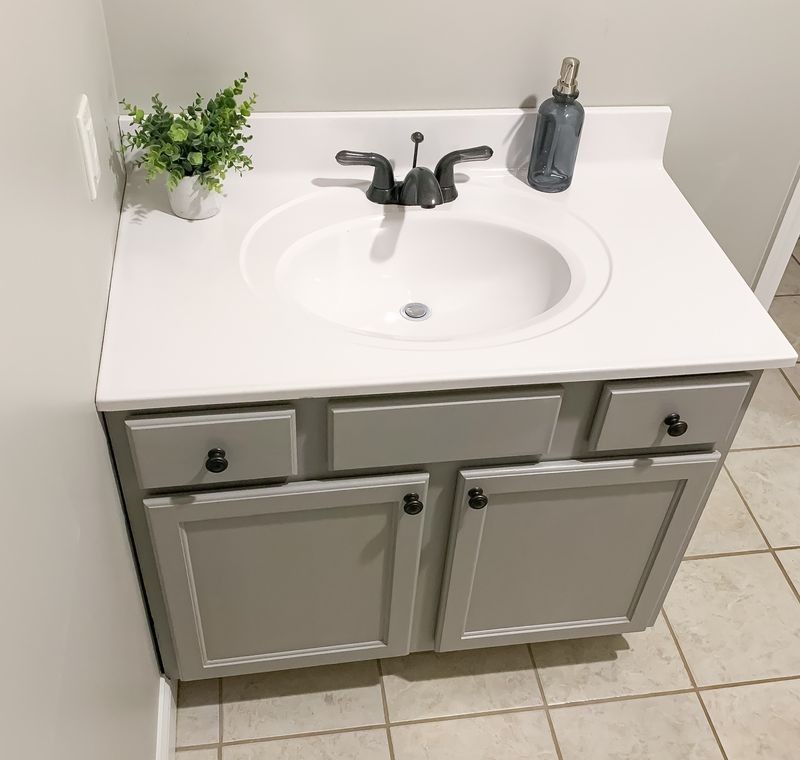
Maintaining the Finish to Avoid Repeat Costs
After refinishing our sink, proper care keeps it looking new and prevents pricey redo's. Here's what we can do:
- Use Gentle Cleaners: Harsh scrubbers or chemicals can damage the finish. We should stick to non-abrasive cleaners like mild soap to protect it.
- Skip Harsh Chemicals: Bleach or ammonia can wear down the surface over time. Let's keep things simple with water and a soft cloth.
- Clean Regularly: Wiping the sink after each use stops grime from building up, which can harm the finish.
- Fix Small Problems Fast: A tiny chip or scratch? We should repair it quickly before it turns into a bigger, more expensive issue.
Cost of Maintenance After Refinishing or Reglazing a Sink
A refinished or reglazed sink can last 15 to 20 years with proper care, but without it, the finish might wear out faster, leading to costly repairs or even another refinishing job. By taking a few simple steps, we can protect our sink and keep it looking great for years to come.
Let's break down the potential costs we might face each year for maintaining our refinished sink:
- Cleaning Supplies: If we buy a new bottle of gentle cleaner every few months, we might spend around $20 to $50 per year.
- Touch-Up Kits: We might need a touch-up kit every couple of years, costing about $20 to $50 each time.
- Professional Touch-Ups: If we opt for professional services every 3 to 5 years, we could budget around $100 to $300 for each visit.
Overall, the annual maintenance cost for a refinished sink is relatively low, especially when compared to the cost of refinishing or replacing the sink.
FAQs
When it comes to sink refinishing or reglazing, lots of questions come up. To help out, we've gathered the most common ones and answered them below.
Can all types of sinks be refinished or reglazed?
Not every sink can be refinished or reglazed! Here's a quick list of what usually works:
- Porcelain Sinks: These are super common and perfect for refinishing.
- Cast-Iron Sinks: Tough and great for a fresh finish.
- Stainless steel sinks: Possible, but it's trickier, so a pro might be needed.
- Granite or Stone Sinks: These can sometimes be refinished, depending on the damage.
How long does a refinished or reglazed sink last?
A sink refinishing or reglazing job can last 15 to 20 years if you treat it right. Use gentle cleaners and skip harsh chemicals to keep it looking good. If you're tough on it or don't clean it properly, the finish might wear out sooner.
How long does it take to refinish a sink?
The time for sink refinishing or reglazing depends on who's doing it:
- DIY: If you do it yourself, plan on one or two days, including drying time.
- Professional: Pros usually finish in 3 to 8 hours, often in a single day.
Can a cracked sink be reglazed?
Small cracks or chips can be fixed. They can often be filled in during the refinishing process, leaving the sink smooth and shiny. But if the cracks are big and deep, the sink might not hold up well. Check with a pro to see if reglazing makes sense or if replacement is better.
How do I choose the right refinishing service?
Try these tips:
- Check Reviews: Look for people with happy customers.
- Ask for Examples: Photos of past jobs show their skills.
- Get Quotes: Compare prices from at least three pros.
- Look for Warranties: A guarantee can give you confidence.
Conclusion: Is Sink Refinishing or Reglazing Worth It?
After exploring sink refinishing and reglazing, it's easy to see why this option is so popular. It's a budget-friendly way to fix up a sink, save time, and refresh our kitchens or bathrooms. Let's break down the main points and figure out if it's worth it for us.
- Cost-Effective: It costs between $400 and $700 on average. That's up to 70% in savings!
- Time-Saving: The job usually takes just one day, unlike a replacement that could drag on longer.
- Less Disruption: No need to tear out the old sink or mess with plumbing.
- Environmental Benefits: Keeping our sink instead of tossing it helps cut down on waste.
- Preserves Original Design: Refinishing keeps its unique look while making it shine again.
If we're thinking about hiring a pro, jabrasanitary.com is the way to go. We excel in recommending sink refinishing services with an experienced team that handles all types for lasting results.
They prioritize customer satisfaction through attentive sink refinishing services and offer affordable sink refinishing pricing, ensuring great value for high-quality work.







